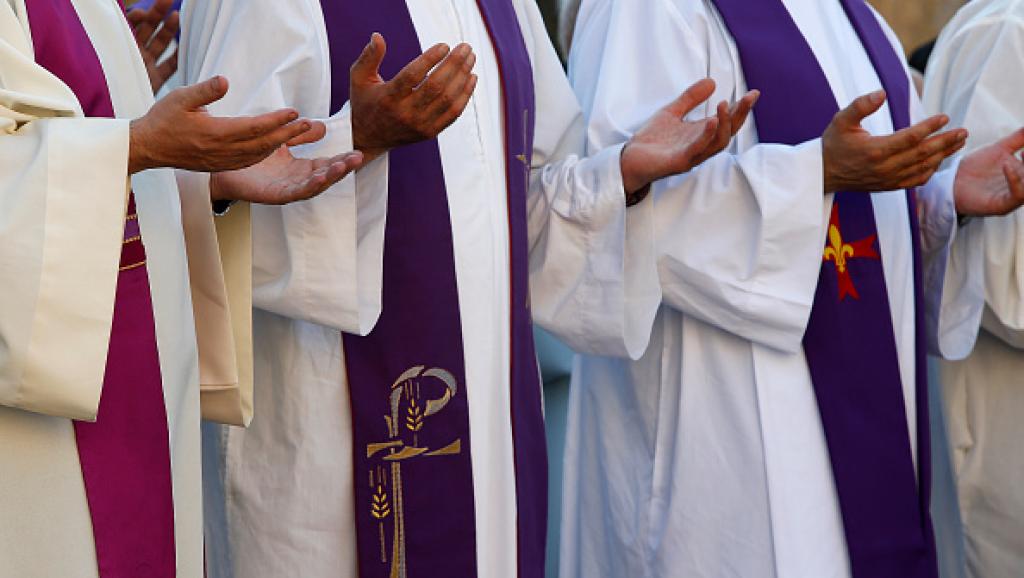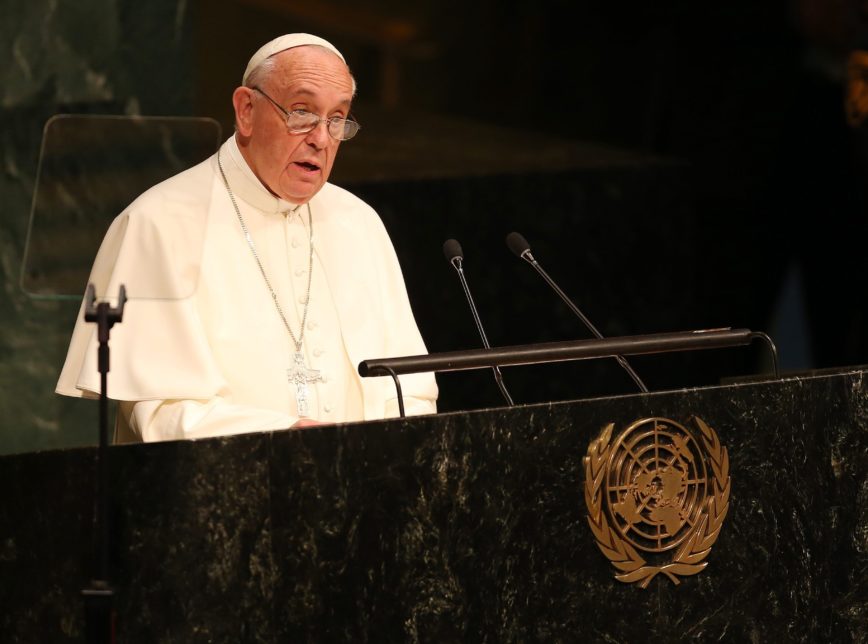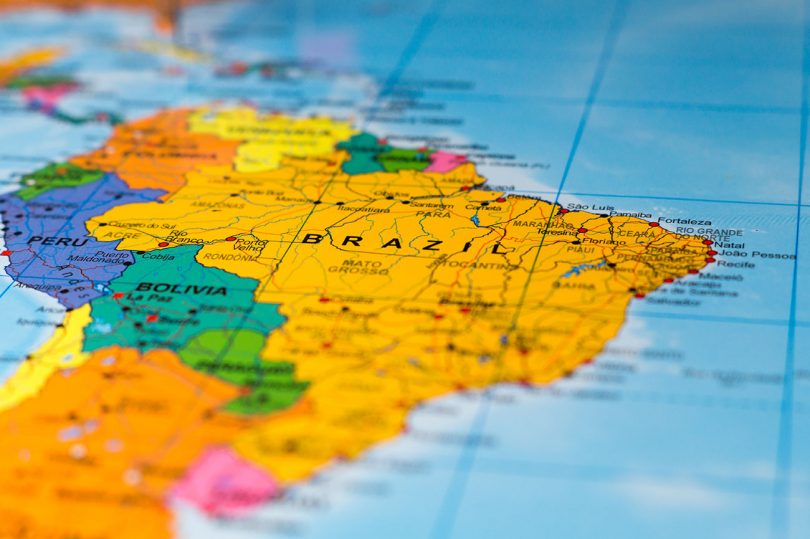RIO DE JANEIRO, BRAZIL – The Catholic Church in Latin America is now the centerpiece of the “third wave” of child abuse cases, after the first one that broke out in 2002 in the United States and the one that ensued in Europe and Oceania. This is the conclusion of Child Rights International Network (CRIN), a British NGO that is respected for its defense of children’s rights, in a 70-page report that became public on Wednesday and is available on its website.

It is the first comprehensive study of the phenomenon in the 18 Spanish-speaking countries of the continent and also in Brazil, the country with the highest number of Catholics in the world. It is an overview of the situation in terms of number of cases, legislation, and institutional response. “The most evident result is to establish the reality of the scarcity of data, to create a starting point for the Church and Governments to start investigating. It’s still a taboo, there’s less media coverage, and there’s no public debate on the subject,” said Víctor Sande-Aneiros, one of the researchers.
Four countries lead the way in breaking the silence: Mexico (at least 550 complaints), Chile (243), Argentina (129), and Colombia (137), or over a thousand complaints among the four. However, there are others where the issue does not yet officially exist, such as Cuba, Ecuador, Honduras, and most strikingly, Brazil. In the latter case, however, there is a reference that has never been explored in depth: as the study recalls, an internal Vatican report in 2005 estimated that one in ten Brazilian priests – around 1,700 – was involved in a case of abuse. The report explains that in these countries the media has not yet carried out a serious investigation, which is typically the first step in raising the issue of abuse.
“The lesson we have learned from countries around the world is that a lengthy silence can foreshadow the greatest abuse scandals. The wave of disclosures in Latin America continues to grow and groups of survivors in countries like Argentina and Chile are expected to inspire those in other countries in the region to speak up,” the study notes.
Ecuadorian Sara Oviedo, former vice-president of the United Nations Committee on the Rights of the Child and Holy See rapporteur in January 2014, states that this report “is a significant effort for activists throughout Latin America, because of its systematic reporting and recommendations that serve the strategy being promoted to ensure that the Catholic Church prosecutes those guilty of sexual abuse”.
In 2014, CRIN had published another investigation on abuse in the Church around the world, in which it pointed out that Latin America was one of the main regions where priests accused of assault in North America and Europe were sent. “In addition, the number of complaints was very low compared to other countries with much smaller Catholic populations, so we wanted to focus on a region where there had not yet been a wave of disclosures,” she explained.
The first finding is the secrecy and lack of transparency that still reign. Argentina, where the denunciations emerged in 2017, and Chile, in 2018, are the reference countries. In addition, alongside Mexico, Argentina is the country where the victims are better organized and more active. In some cases, they have joined the Ending Clerical Abuse (ECA) network, the international organization for reporting such abuse. Chile is the first country in Latin America where an independent investigation commission has been requested, following the Australian and Irish model.
Currently, in Argentina, there are two priests being tried, Nicola Corradi and Horacio Corbacho, accused of abusing almost thirty deaf minors in the Provolo Institute of Mendoza. This case, one of the most serious known so far, has increased visibility for the issue but has not resulted in significant changes in the Catholic Church, according to the Network of Survivors of Ecclesiastical Abuses.

“The Church appears to be concerned with the victims and has issued action protocols and documents, but these are measures aimed only at continuing to shield the institution,” says Carlos Lombardi, an attorney with the Network, who has 40 cases. In any case, as a result of rulings such as that of Fathers Justo José Ilarraz and Juan Escobar Gaviria, sentenced to 25 years imprisonment in 2018, an increasing number of victims dare to speak out and generally take less time to denounce, according to Lombardi. He says that “Justice is providing answers”.
In other countries, such as Mexico, Guatemala (12 accused priests) and Uruguay (44 complaints involving 40 priests), it was the Church itself that provided the data, “but systematically conceals the identity of the accused and does not refer the cases to the civil officials,” the report says. In response, judges in some countries, such as Chile, have ordered police actions in ecclesiastical offices to access documents that may serve as evidence in judicial proceedings.
In Mexico, the Church started the year with a shock when a new complaint arose against a Legionairre of Christ accused of abusing at least eight children. This forced the institution to adopt some measures, such as disclosing that 157 priests have been suspended over the past nine years and 101 have been prosecuted in ecclesiastical courts. “The Church is very interested in taking care of its image. The Episcopate provides a figure, but nothing is known about them, they are untraceable,” says former Father Alberto Athié, a reference in the fight against clerical pedophilia in his country.
A commission to investigate abuse has also been set up. However, the group consisted of “unconditional members of the Church,” says Athié. “There is still a lot to do,” he says after acknowledging that although awareness of the issue has improved, it is now necessary to “break the pact” of the Church with the civil officials “that do not wish to disrupt the balance between the powers”. “We need to reconstruct the historical truth of each of the cases and bring them to justice. This is incredibly difficult in Mexico.”
The CRIN report emphasizes that establishing independent investigation bodies is required and stresses that in Latin America there have already been attempts by such bodies, the truth commissions, to investigate human rights violations during dictatorships.
There is still much work to be done. The NGO BishopAccountability.org explains in a report that the factors that led to a significant divulging of the scandal in other parts of the world, such as the mass denunciations of victims or an investigation by the Public Prosecutor’s Office or government commissions, are not yet underway in Latin America.
In Colombia, journalist Juan Pablo Barrientos, author of the recent book ‘Dejad que los niños vengan a mí’ (“Let the little children come to me”), guarantees that the number of cases of pedophilia in the country is greater than the official figures. “Cardinal Rubén Salazar said on March 11th, 2019 that there are more than 100 cases of pedophile priests and abusers throughout the country. The Prosecutor General’s Office says it only has a record of 57 complaints, but my investigation, based on dozens of complaints to which I had access and after understanding the figure of the Secret Archives and the dynamics of canon law, contradicts these numbers,” he writes in the book, which they tried to censor in several cities, like Medellín.

The journalist demanded, through legal actions, access to the Secret Records, where the archdioceses keep documents about the priests in their jurisdiction, but it was denied him. The Church in Colombia is based on two articles of the Concordat signed between the country and the Holy See, which separates canonical legislation from civil law. However, Barrientos emphasizes: “We are talking about crimes, not sins.”
The CRIN report lists the main cover-up tactics the Church is using: transferring the accused, blaming the victims and their families and making secret payments for their silence. It also resorts to psychological manipulation, as in the case of the Archdiocese of Cali, Colombia, where a psychologist named by the Church interviewed the children and threatened them not to pursue the denunciation, telling them that it was an attack on the Church, that they would go to hell, lose their minds and end up in prison. In Ecuador, a psychologist appointed by the Archdiocese of Cuenca demanded that a victim of abuse ask for forgiveness from Father César Cordero, who was accused of raping her as a child.
The attempts to silence the press, such as the attempt on Barrientos’ book in Colombia, merit special mention. The brief mentions the case of the Paraguayan newspaper La Nación, which in 2016 began publishing a number of reports on five Catholic priests from Argentina transferred to that country. But the series was interrupted after four days. Later, it emerged that the Vatican nuncio [ambassador] in the country, Eliseo Ariotti, had pressured the newspaper’s owners. After this disclosure, the newspaper resumed publication and won a journalistic human rights award.
In Peru, the actions of Archbishop of Piura and Tumbes, José Antonio Eguren Anselm, against journalists Pedro Salinas and Paola Ugaz, had a great impact. In 2015, they published Mitad Monjes, Mitad Soldados (“Half Monks, Half Soldiers”), a book on the abuses of Sodalitium Christianae Vitae, a Catholic organization. In April 2019, the archbishop withdrew the complaints against the two journalists, but Salinas had already been convicted and sentenced to one year in prison and a considerable fine. Ugaz now faces another trial, which the National Association of Journalists of Peru describes as “fiscal and judicial harassment”.
As for the legislative response, there was a positive reaction with the repeal of the statute of limitations for the crime in six countries: Nicaragua, Mexico, El Salvador, Ecuador, Peru, and Chile.
Only in a few countries is it mandatory to report the crime, and in the most extreme case, in Cuba, the regulations are more restrictive: only the victim, spouse, parents, siblings, legal representative or a person under their responsibility may report a sexual offense.
The most surprising case is that of Venezuela and in some Mexican states, where it is not possible to accuse a person of certain sexual crimes if he or she marries the victim.
Source: El País

